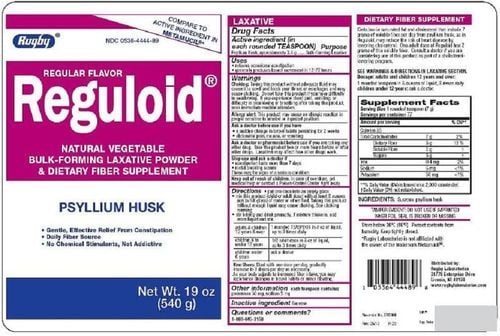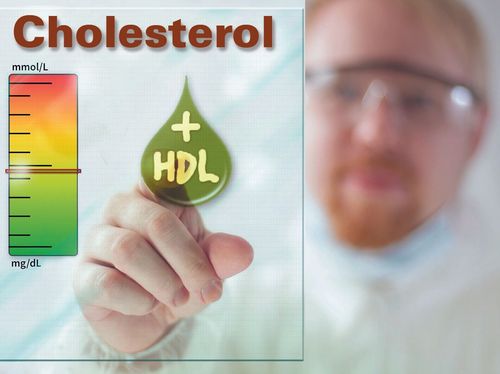This is an automatically translated article.
The article is professionally consulted by Master, Doctor Le Thi Minh Huong - Emergency Medicine Doctor - Department of Resuscitation - Emergency - Vinmec Nha Trang International HospitalCurrently, stroke is one of the leading causes of death. This is an acute, sudden and very dangerous disease if not treated promptly. The following article will give us an overview of this disease.
1. What is a stroke?
Stroke is an acute disease. A stroke occurs when a blood vessel in the brain bursts or is blocked, causing blood flow to the brain to stop. If not treated in time, the cells in the brain will quickly stop working. This can leave the person with a stroke facing disability, even death.
2. Symptoms of a stroke
Signs of a stroke include:Numbness or muscle weakness, especially often on one side of the body Vision changes in one or both eyes Difficulty swallowing Severe headaches with no known cause Dizziness, walking Difficulty, difficulty moving Slurred speech, difficulty speaking, numb tongue Memory disorder Symptoms that signal a stroke do not last long, so when you see abnormal symptoms, you should not be subjective, should get emergency care promptly. .
In order to recognize the risk of stroke early, many countries are now using the "FAST" rule:
Face: face is asymmetrical or one side of the mouth is distorted, can ask the patient to smile to see Arm better. : the patient will raise both hands, whichever side is weaker or falls first, that side has paralysis Speech: abnormality in language, the patient will be asked to repeat a simple sentence. If the voice is not round, clear, not fluent or can not speak, this is a sign of abnormality Time: The patient is at very high risk of having a stroke if all three of the above signs occur. It is necessary to urgently bring the patient to a medical facility for treatment.
3. Stroke diagnosis
Timing is key in the treatment of stroke patients, the earlier the treatment, the better the chance of survival. Because when there is a lack of oxygen, brain cells will stop working within a few minutes. Some clot-busting medications can be used to limit brain damage, but they must be taken within 3 hours of stroke symptoms.Once the brain stops working, the parts of the body controlled by the brain will also stop working. Therefore, stroke is the leading cause of long-term disability in patients.
To diagnose a stroke, doctors will perform a blood test to check the growth of the clot or the extent of the bleeding.
Besides, CT scans can help doctors understand the symptoms of stroke caused by hemorrhagic or blood clots.
Several other tests may be done to find out where the blood clots or where the bleeding is in the brain.

4. Types of stroke
Stroke is a very scary disease because it can happen to anyone and at any time, especially it occurs suddenly with extremely severe consequences.The following are some common types of stroke, including:
Ischemic stroke : This is the most common type of stroke, accounting for up to 90%. An ischemic stroke occurs when an artery in the brain is narrowed or blocked, causing blood to flow less or less. Hemorrhagic stroke: This type of stroke is less common but has a high chance of death. A hemorrhagic stroke occurs when a blood vessel in the brain bursts or leaks, making it difficult for the bleeding to stop. Blood flow to the brain is temporarily blocked, causing stroke-like symptoms. When blood flow returns to normal, stroke symptoms should go away. It can also be a sign of an impending major stroke.
5. Causes of stroke
The main cause of stroke is atherosclerosis. High cholesterol can build up on the artery walls, creating blockages that block blood vessels in the brain.A blockage of a blood vessel in the brain can occur due to a blood clot. It causes ischemic stroke. Atherosclerosis makes it easier for blood clots to form.
Hemorrhagic stroke can occur if uncontrolled high blood pressure leads to a ruptured artery.
6. Risk factors for stroke
A stroke can come on suddenly and strike you. The following are some factors that increase the risk of stroke, including:Heart rhythm disorders High blood pressure High cholesterol Diabetes Obesity Besides, some habits can make you more likely to have a stroke such as: :
Smoking Do not exercise Drinking alcohol If you eat too much fat and cholesterol can cause the arteries to be narrowed by high cholesterol, increasing the risk of blood clots in the walls of blood vessels, obstructing the blood flow. circulation to the brain. A diet rich in fruits, whole grains, and fish may help reduce the risk of stroke.
In addition, some other factors such as age, genetic factors also increase the risk of stroke. Men are more likely to have a stroke than women, but women are more likely to die from a stroke.

7. Stroke treatment
For ischemic stroke, emergency treatment focuses on using medication to restore blood flow. Blood clot dissolving drugs will help stroke patients reduce the risk of facing danger if used promptly.For hemorrhagic stroke, depending on the bleeding or hematoma, the doctor will prescribe appropriate treatment. Treatment usually tries to control high blood pressure and bleeding in the brain.
Whether a stroke causes long-term damage to the patient depends on the severity of the disease and whether the patient is treated promptly or not.
A stroke survivor may experience one or more health problems, such as numbness in the arms or legs and difficulty walking, vision, swallowing, speaking or understanding. These problems can be permanent, but in many cases people recover some or even most of their abilities.
8. Stroke recovery
After a stroke, speech, movement, and sensation are most affected. Therefore, therapeutic exercises are needed to restore these functions.Speech function : Rehabilitation is key to the stroke recovery process. It helps people regain lost skills and learn to adapt to those vulnerabilities. The goal is to help restore as much as possible. For people who have difficulty speaking, speech therapists can help people talk more coherently, more clearly Motor function: Problems with movement or balance are common. out after a patient has had a stroke. This can affect the person's daily activities. Physical therapy is an effective way to regain muscle strength, balance, and coordination. Sensory function: After a stroke, some patients' thoughts and feelings change in a negative direction such as fear, anger, anxiety... even depression. You should talk to a psychologist to learn how to manage your own emotions.
9. Stroke prevention
Following a healthy lifestyle is a way for people who have had a stroke to prevent it from happening again, and even for people who have never had a stroke, including:Don't smoke Exercise Exercise Exercise regularly Limit alcohol Don't eat salty foods A healthy diet with lots of vegetables, fish and whole grains For people at high risk of stroke, doctors often recommend medication to reduce this risk. Medicines including aspirin prevent blood clots from forming. Some people may need anticoagulants, such as warfarin. And if you have high blood pressure or high cholesterol levels, your doctor will prescribe medication to lower them, in conjunction with lifestyle changes.
In some cases of carotid artery stenosis, people who have had a mild stroke due to this problem may be offered carotid endarterectomy to remove plaque from the lining of the carotid artery. carotid artery and may prevent additional strokes. Your doctor will help you weigh the risks and benefits of this method.
Besides, doctors can treat blocked carotid arteries without surgery with a procedure called angioplasty and stenting to open up the artery.
More than half of people who have a stroke regain the ability to care for themselves. Patients who have had a stroke can be fully recovered if they are given blood-clotting drugs early. Although the risk of a second stroke is higher than at first, this risk decreases over time.
Currently, Magnetic Resonance Imaging - MRI/MRA is considered a "golden" tool to screen for brain stroke. MRI is used to check the condition of most organs in the body, especially valuable in detailed imaging of the brain or spinal nerves. Due to the good contrast and resolution, MRI images allow to detect abnormalities hidden behind bone layers that are difficult to recognize with other imaging methods. MRI can give more accurate results than X-ray techniques (except for DSA angiography) in diagnosing brain diseases, cardiovascular diseases, strokes,... Moreover, the process MRI scans do not cause side effects like X-rays or computed tomography (CT) scans.\
Vinmec International General Hospital currently owns a 3.0 Tesla MRI system equipped with state-of-the-art equipment by GE. Healthcare (USA) with high image quality, allows comprehensive assessment, does not miss the injury but reduces the time taken to take pictures. Silent technology helps to reduce noise, create comfort and reduce stress for the client during the shooting process, resulting in better image quality and shorter imaging time. With the state-of-the-art MRI system With the application of modern methods of cerebral vascular intervention, a team of experienced and well-trained neurologists and radiologists, Vinmec is a prestigious address for stroke risk screening and screening. reliable goods.
In the past time; Vinmec has successfully treated many cases of stroke in a timely manner, leaving no sequelae: saving the life of a patient suffering from 2 consecutive strokes; Responding to foreign female tourists to escape the "death door" of a stroke;...
Please dial HOTLINE for more information or register for an appointment HERE. Download MyVinmec app to make appointments faster and to manage your bookings easily.














